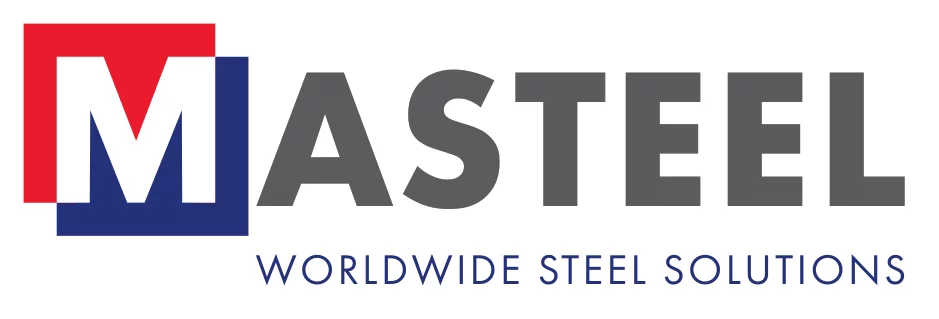The capabilities of armoured vehicles are derived from the materials they are made from. A material too heavy will reduce mobility, while one too weak will compromise protection. Designs for modern armoured vehicles tend to incorporate a mix of composites, ceramics, and metals, but steel, in particular, has been established as the backbone of defensive performance. High-strength low alloy (HSLA) steel grades are especially important, offering a balance of strength, toughness, and weldability that can be utilised in both armour plating and structural frameworks, making them central to modern armoured vehicle design.
Why HSLA Steels Matter in Armoured Vehicle Design
HSLA steels are very different to conventional steels as they are produced through the careful control of alloying elements and processing methods like quenching, tempering, and thermomechanical rolling. Such a combination of composition and processing allows manufacturers to produce steels with high yield strength, excellent toughness, and enhanced weldability, ensuring high performance without the penalties of excess weight or brittleness. These qualities make HSLA steels indispensable for armoured vehicle design, where they are not only used in rolled armour plates, but also in structural frameworks and hybrid protection systems that combine steel with composites or spall liners.
Suitable HSLA Steels for Armoured Vehicles
Protection 400 Armour Plate
Protection 400 is a quenched and tempered HSLA steel developed specifically for armour applications. It belongs to the medium-hardness armour category and is designed to provide a balance between ballistic resistance and ease of fabrication.
Properties:
- A Brinell hardness of approximately 400 HBW
- A tensile strength of around 1,250 MPa
- A toughness level that combines hardness with ductility to absorb impacts without shattering.
Advantages:
- Provides reliable ballistic resistance against small arms fire
- Offers easier cutting, welding, and shaping compared to higher-hardness armour steels in the 500 HBW range.
- Sustains toughness under operational stresses and fatigue
Applications in armoured vehicles:
- Hulls
- Side panels
- Enclosures
- Backing plates in layered armour systems.
Protection 500 Armour Plate
Protection 500 is a higher-hardness quenched and tempered armour steel developed for maximum penetration resistance in high-threat environments.
Properties:
- A Brinell hardness of 500–540 HBW
- A tensile strength of up to 1,600 MPa
- A composition engineered for superior resistance to ballistic and explosive threats
Advantages:
- Delivers dependable stopping power against higher-calibre and armour-piercing projectiles
- Reduces vehicle weight by allowing the use of thinner plates without sacrificing protection
- Maintains excellent impact strength and multi-hit resistance in service
Applications in armoured vehicles:
- Tactical vehicles
- Turret armour
- Exposed panels facing direct fire
- Combined with spall liners for added crew protection.
S690QL and S960QL
S690QL and S960QL are structural HSLA steels processed through quenching and tempering to deliver exceptional strength. Although these HSLA steels are not designed primarily for ballistic use, they serve as the main structural material in many armoured, tactical, and support vehicles.
Properties:
- Yield strengths of 690 MPa (S690QL) and 960 MPa (S960QL)
- Excellent toughness even in thinner plate sections
- High fatigue resistance under cyclic loading
Advantages:
- Enables lighter vehicle structures while maintaining strength
- Provides high resilience under vibration and dynamic stress
- Works effectively alongside armour plates for combined performance
Applications in armoured vehicles:
- Frames, reinforcements, and support structures
- Naval and amphibious vehicles requiring large, tough, weldable plates
- Vehicles carrying heavy armour and weapon systems where mobility must be maintained.
S700MC and S960MC
S700MC and S960MC are HSLA steels produced through thermomechanical controlled processing (TMCP) to achieve high yield strength and excellent fabrication performance.
Properties:
- Yield strengths between 700 and 960 MPa
- Excellent cold-forming capabilities
- Outstanding weldability and low susceptibility to embrittlement in the heat-affected zone
Advantages:
- Enables easy forming into complex, modular shapes
- Offers a lightweight yet strong structure that enhances mobility and fuel efficiency
- Ensures reliability under operational stress, even after welding and forming
Applications in armoured vehicles:
- Chassis and trailer frames
- Modular armour substructures
- Lightweight, mobile vehicle designs requiring high fabrication performance
- Rapid-deployment vehicles where weight reduction offers tactical advantages.
The Right High Strength Steel for the Right Role
No single HSLA steel is designed to meet every requirement of an armoured vehicle; each grade instead serves a specific role within modern armoured vehicle design. Protection 400 and 500 provide the ballistic resistance needed to defeat incoming threats, while quenched and tempered grades like S690QL and fabrication-friendly TMCP steels like S700MC ensure the structure of the vehicle remains strong, light, and adaptable. By combining these HSLA steels in the right way, designers can produce vehicles that balance protection, mobility, and long-term durability, enhancing operational effectiveness in today’s demanding battlefield environments.
Masteel provides high-performance HSLA steels engineered for armoured vehicle construction and defense applications. Speak to our team today to find the right grade of HSLA steel for your project.
